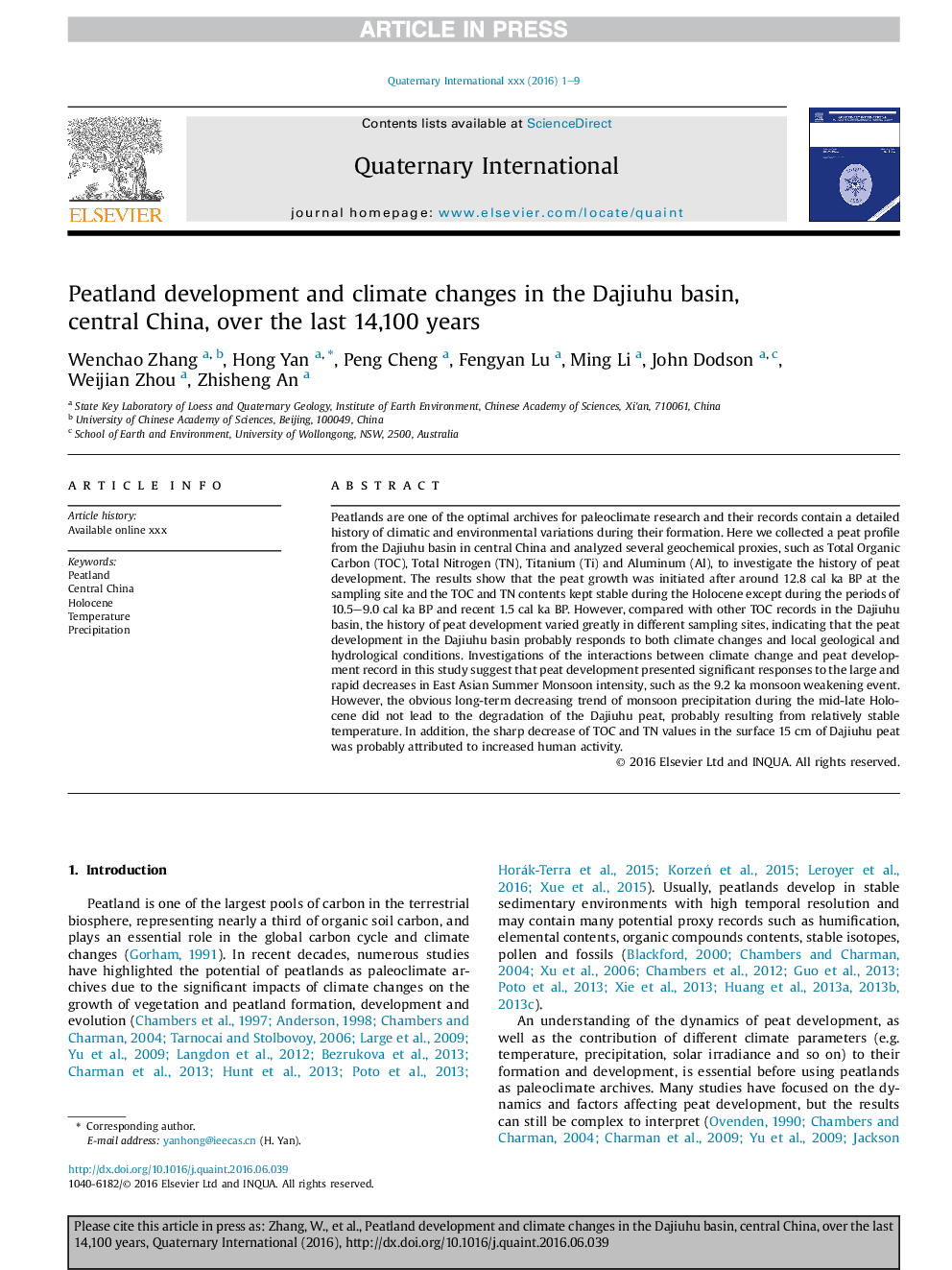| Article ID | Journal | Published Year | Pages | File Type |
|---|---|---|---|---|
| 5114019 | Quaternary International | 2016 | 9 Pages |
Abstract
Peatlands are one of the optimal archives for paleoclimate research and their records contain a detailed history of climatic and environmental variations during their formation. Here we collected a peat profile from the Dajiuhu basin in central China and analyzed several geochemical proxies, such as Total Organic Carbon (TOC), Total Nitrogen (TN), Titanium (Ti) and Aluminum (Al), to investigate the history of peat development. The results show that the peat growth was initiated after around 12.8 cal ka BP at the sampling site and the TOC and TN contents kept stable during the Holocene except during the periods of 10.5-9.0 cal ka BP and recent 1.5 cal ka BP. However, compared with other TOC records in the Dajiuhu basin, the history of peat development varied greatly in different sampling sites, indicating that the peat development in the Dajiuhu basin probably responds to both climate changes and local geological and hydrological conditions. Investigations of the interactions between climate change and peat development record in this study suggest that peat development presented significant responses to the large and rapid decreases in East Asian Summer Monsoon intensity, such as the 9.2 ka monsoon weakening event. However, the obvious long-term decreasing trend of monsoon precipitation during the mid-late Holocene did not lead to the degradation of the Dajiuhu peat, probably resulting from relatively stable temperature. In addition, the sharp decrease of TOC and TN values in the surface 15 cm of Dajiuhu peat was probably attributed to increased human activity.
Related Topics
Physical Sciences and Engineering
Earth and Planetary Sciences
Geology
Authors
Wenchao Zhang, Hong Yan, Peng Cheng, Fengyan Lu, Ming Li, John Dodson, Weijian Zhou, Zhisheng An,
